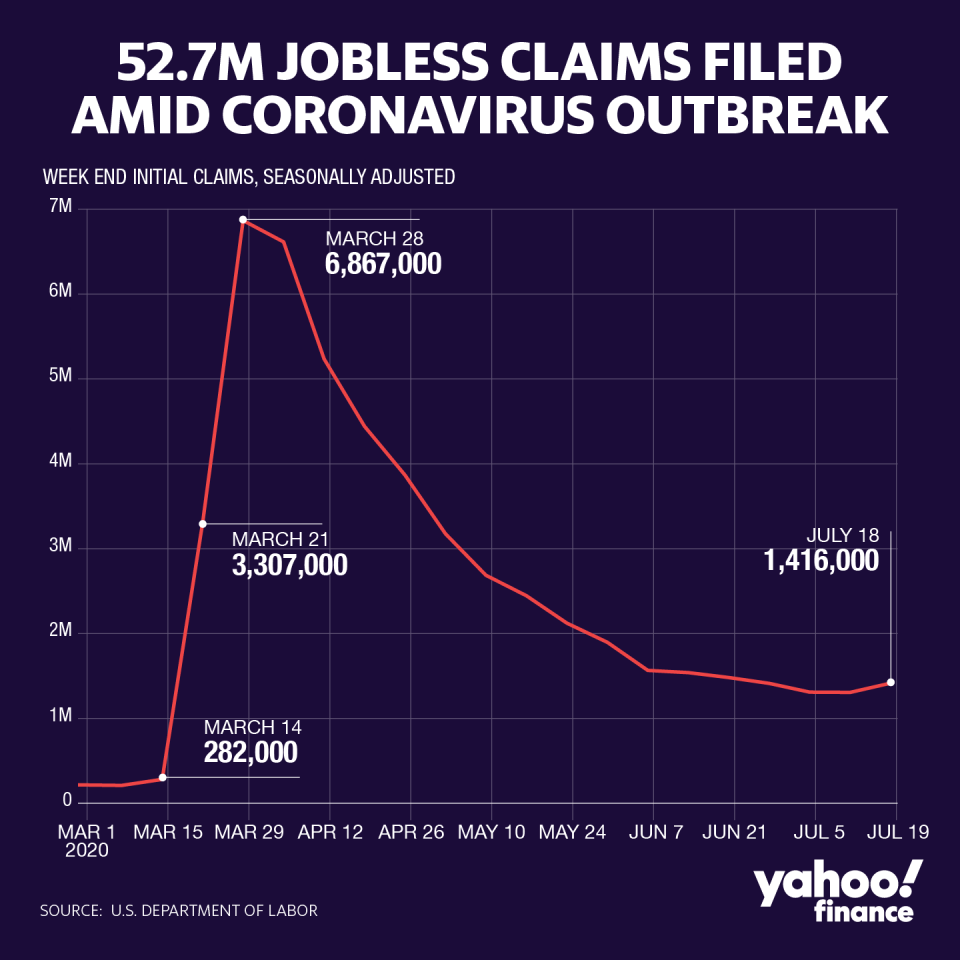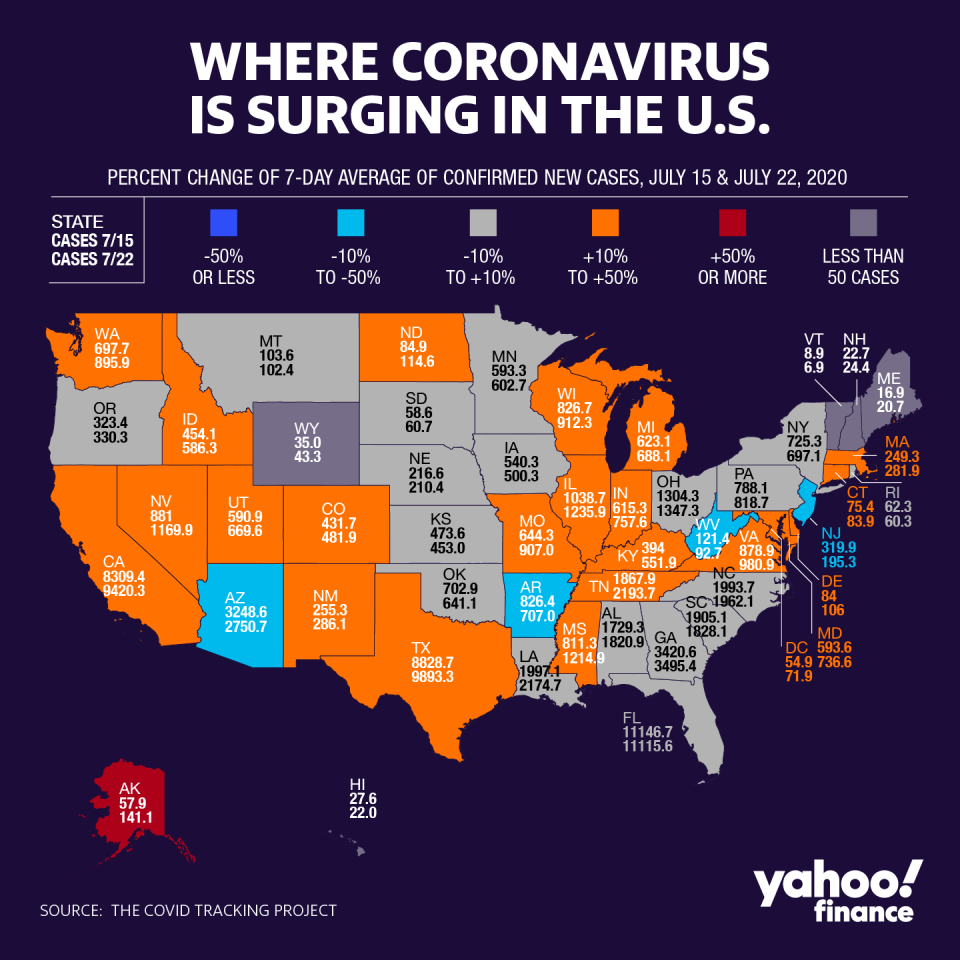4.5 million Americans expected stay jobless for six months or more: NBER
While many Americans have already returned to their jobs or found new ones after the coronavirus pandemic upended the economy this spring, millions may still remain out of work for a long time, according to a new analysis.
Around 4.5 million unemployed Americans may not be able to find a job for more than six months, while nearly 2 million will need more than a year to get a job again, a paper by the National Bureau of Economic Research (NBER) found.
Read more: Everything you need to know about the extra $600 in unemployment benefits
The findings underscore the long-term reach of the pandemic and the lockdowns that were enacted to prevent further spread. It also offers a sobering outlook for the many newly jobless Americans who are filing for unemployment insurance every week.
“It’s lower than the peak of what was in the Great Recession, but it's close to it,” said Gabriel Chodorow-Reich, an associate professor of economics at Harvard. “Two million people unemployed for more than 46 weeks. It's a lot of people.”

Before the start of the pandemic, less than 2% of the labor force was in long-term unemployment. The current pandemic will likely increase this to 3%, compared with 4.5% of the labor force in the Great Recession, according to Chodorow-Reich.
‘A lot of labor market churn underlying that forecast’
The projection is based on a baseline scenario where the unemployment rate falls to around 9.5% at the end of 2020 and then decreases to 7% in 2021.
That is still considered “a rapid recovery by historic standards,” according to Chodorow-Reich.
But while the unemployment rate is recovering as more workers get their jobs back, the number of weekly unemployment insurance claims remain at elevated levels, which could impact long-term unemployment.

“What we find is that there's a lot of labor market churn underlying that forecast,” Chodorow-Reich said. “What that means is that even as the unemployment rate is declining, there's also a lot of people who are still being laid off.”
The unemployment rate decreased from 14.7% in April to 11.1%, but the number of people filing for unemployment insurance has steadily remained between 2 and 1 million per week for the last 8 weeks. Last week, there were 1.4 million filings for unemployment insurance last week, the first increase since March.
‘Lower chance of getting a job each month’
One of the drivers behind long-term unemployment is a Catch-22: The longer a worker remains unemployed, the harder it gets for that worker to eventually find a job.
“People who have been unemployed for longer have a lower chance of getting a job each month than people who are recently unemployed,” Chodorow-Reich said.

Read more: Do you have to pay taxes on unemployment benefits?
A lot of the people who lost their jobs in April found jobs very quickly because they were on temporary layoff and were eventually recalled. More than 2 in 3 workers who were laid off in April returned to their same job by June, according to Chodorow-Reich.
But it gets more and more difficult for those who remain unemployed.
“At the beginning of 2021, you will still have a large number of individuals [who have no job],” he said. “It's about 10% of the original April cohort that was laid off [who will be] still unemployed.”
Another issue is that many of the temporary layoffs are turning into permanent ones and making it harder for people to find employment.
More than 40% of the layoffs that have occurred since the pandemic lockdowns began will likely never come back, according to a May paper from Becker Friedman Institute at the University of Chicago. That’s around 16 million jobs.
“People who started on temporary layoff but then are unemployed for a long period of time, eventually all of them we see converting to permanent layoffs,” said Chodorow-Reich.
Denitsa is a writer for Yahoo Finance and Cashay, a new personal finance website. Follow her on Twitter @denitsa_tsekova.
Read more:
Rich Americans' pullback in spending is hurting the economic recovery
Remote schooling leads to a 'shocking' disparity between rich and poor students
Read more personal finance information, news, and tips on Cashay
Follow Yahoo Finance on Twitter, Facebook, Instagram, Flipboard, SmartNews, LinkedIn, YouTube, and Reddit.



